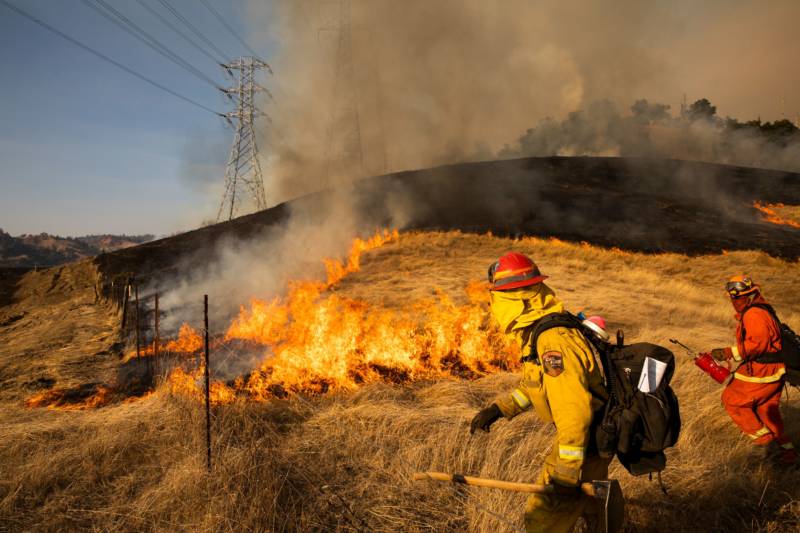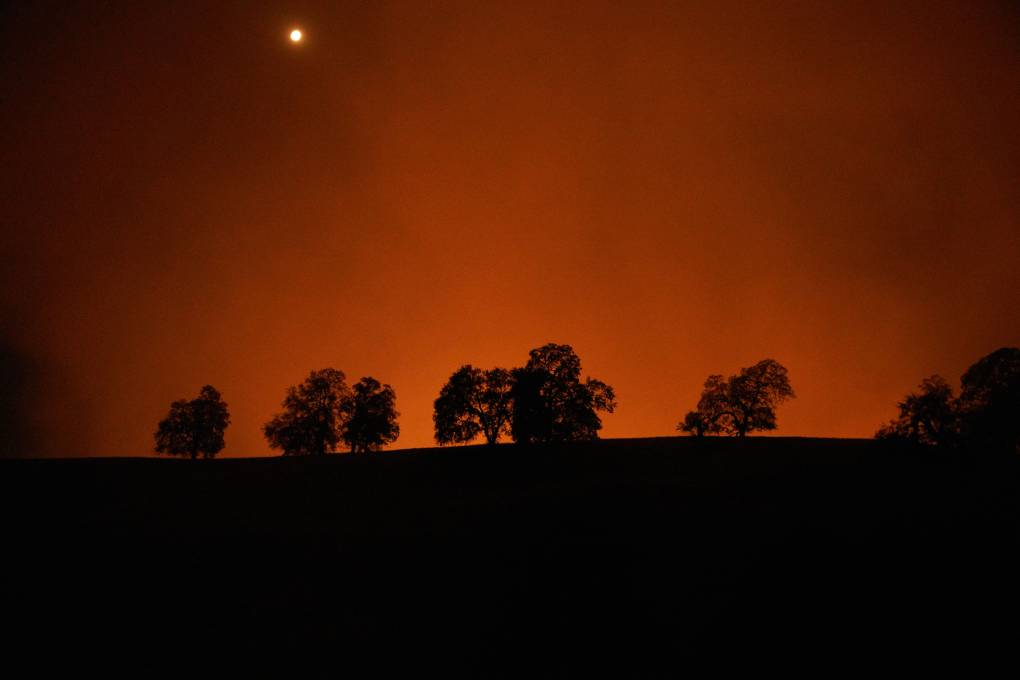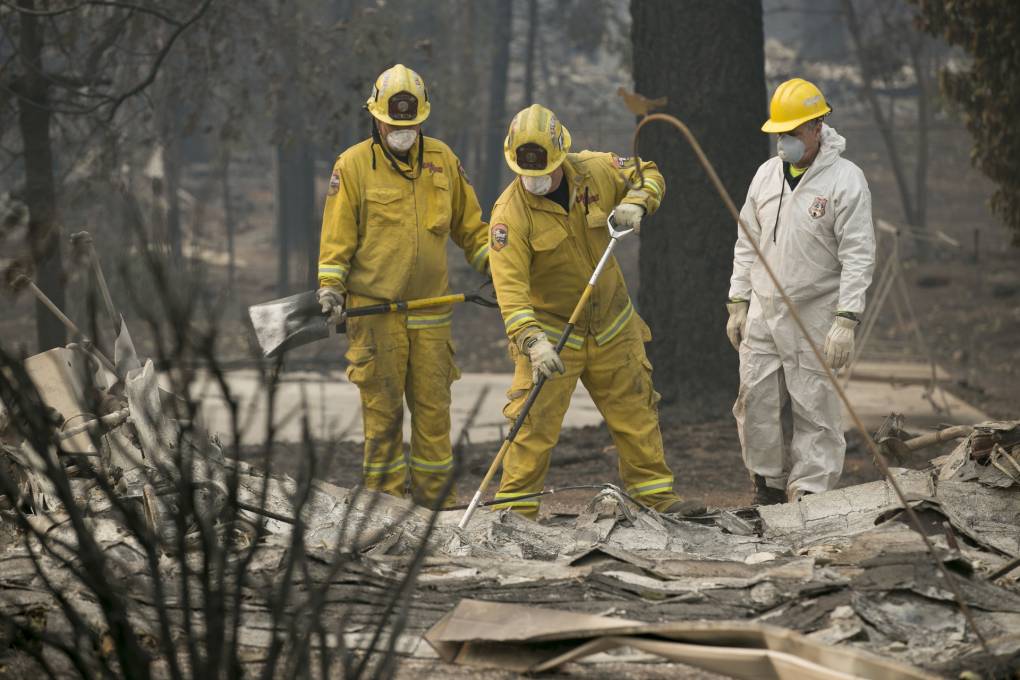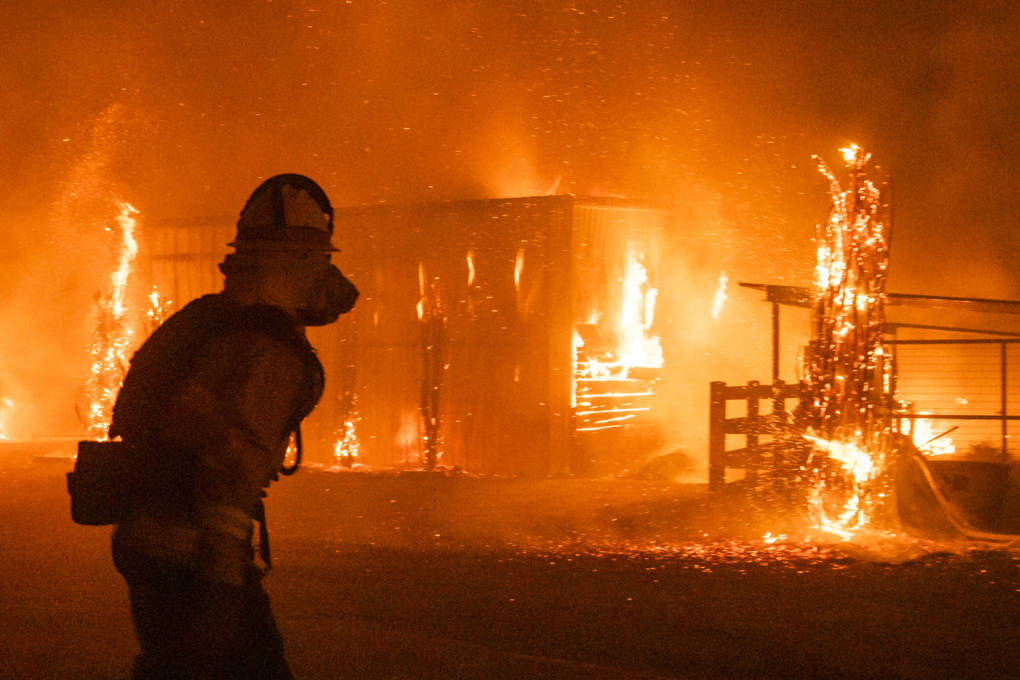Sonoma County prosecutors have filed a criminal complaint charging PG&E with five felony and 28 misdemeanor counts in connection with the 2019 Kincade Fire, a blaze that injured six firefighters, incinerated more than 170 homes and forced the evacuation of more than 100,000 people.
The complaint filed in Sonoma County Superior Court on Tuesday morning not only accuses the utility of recklessly sparking a fire that caused serious injuries and extensive property damage, but of also unleashing clouds of wildfire smoke that posed a potentially deadly danger to residents.
In a statement, PG&E said it was “saddened” by the fire’s impact on the community but rejected the idea it had committed any crime.
The fire began the night of Oct. 23, 2019, as hot, dry, gusty winds swept the mountains in the northeastern corner of Sonoma County. PG&E had initiated a wildfire safety power shutoff in much of the county, but had left a high-voltage transmission line energized in The Geysers geothermal field, northwest of Calistoga.
Cal Fire announced last July that its investigation of the fire traced the cause to a PG&E transmission tower in The Geysers. The firefighting agency said an energized cable on the tower had broken free, swung against the tower and caused an arc — a prolonged electrical discharge. Molten metal fell into the surrounding vegetation and, with winds in the area gusting over 80 mph, the resulting blaze began racing toward the towns of Geyserville and Healdsburg.











